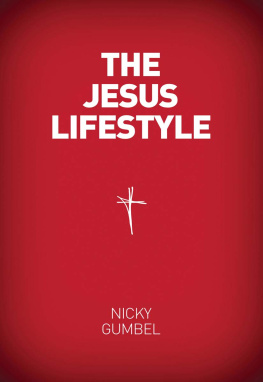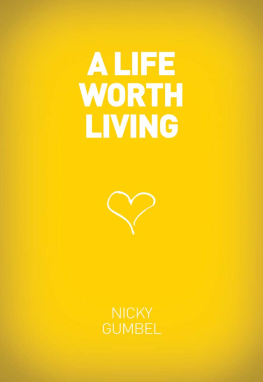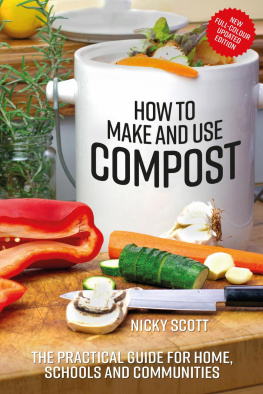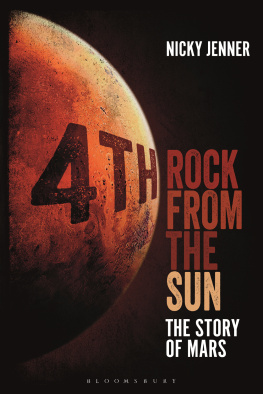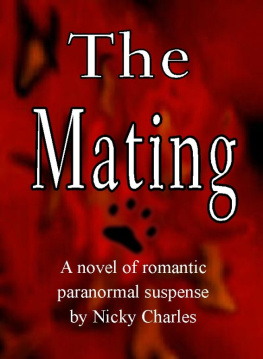ANXIOUS JOBURG
ANXIOUS JOBURG
THE INNER LIVES OF A GLOBAL SOUTH CITY
EDITED BY NICKY FALKOF AND COBUS VAN STADEN PRELIMS.
Published in South Africa by:
Wits University Press
1 Jan Smuts Avenue
Johannesburg 2001
www.witspress.co.za
Compilation Editors 2020
Chapters Individual contributors 2020
Published edition Wits University Press 2020
Images and figures Copyright holders
Cover image Mark Lewis, Yeoville Market on Rockey Street
First published 2020
http://dx.doi.org.10.18772/22020106284
978-1-77614-628-4 (Paperback)
978-1-77614-632-1 (Hardback)
978-1-77614-629-1 (Web PDF)
978-1-77614-630-7 (EPUB)
978-1-77614-631-4 (Mobi)
All rights reserved. No part of this publication may be reproduced, stored in a retrieval system, or transmitted in any form or by any means, electronic, mechanical, photocopying, recording or otherwise, without the written permission of the publisher except in accordance with the provisions of the Copyright Act, Act 98 of 1978.
All images remain the property of the copyright holders. The publishers gratefully acknowledge the publishers, institutions and individuals referenced in captions for the use of images. Every effort has been made to locate the original copyright holders of the images reproduced here; please contact Wits University Press in case of any omissions or errors.
Project manager: Catherine Damerell
Copyeditor: Russell Martin
Proofreader: Lisa Compton
Indexer:
Sanet le Roux
Cover design: Hybrid Creative
Typeset in 10 point Garamond Pro
CONTENTS
Naadira Patel
Sisonke Msimang
Nicky Falkof and Cobus van Staden
Baeletsi Tsatsi
Cobus van Staden
Lebohang Masango
Njogu Morgan
Baeletsi Tsatsi
Derek Hook
Nicky Falkof
Renugan Raidoo
Mingwei Huang
Antonia Steyn
Joel Cabrita and Sabelo Mlangeni
B Camminga
Khangelani Moyo
Aidan Mosselson
Baeletsi Tsatsi
Sarah Nuttall
Acknowledgements
This book emerges from a project titled Urban Anxieties in the Global South, which has been generously supported by a Friedel Sellschop early career award from the University of the Witwatersrand and a National Research Foundation Thuthuka Early Career Fellowship, both awarded to Nicky Falkof in 20172019. The book itself has been further supported by the Andrew W. Mellon Foundation-funded Governing Intimacies project, also based at Wits University. Most of the chapters included here were developed during an August 2017 workshop in Johannesburg, co-hosted by Wits Media Studies and the Wits Institute for Social and Economic Research (WiSER). Thanks to Roshan Cader at Wits University Press, to Srila Roy at Governing Intimacies, and to Sarah Nuttall and Najibha Deshmukh at WiSER. Thanks also to Anton Kannemeyer for the use of his images, to Eric Worby for advice on ethics, to Mehita Iqani for providing an intellectual sounding board, to Carli Coetzee for valuable conversations about anxiety, to Job Mwaura for his work on the original conference, to Valerie Killian for her administrative support, and to the two anonymous reviewers who read this book before publication, whose generous and insightful comments have made it far better. Cobus and Nicky would like to acknowledge the contributors for their continued willingness and enthusiasm through many rounds of revision, and for offering such powerful chapters to this volume. Special thanks to Baeletsi Tsatsi, Antonia Steyn and Naadira Patel for their creative contributions, and the associated conversations, without which the book would not be what it is. We are enormously grateful to our respective partners, Lebogang Mogashoa and Joe Walsh, for their patience with our unusual interests and their invaluable behind-the-scenes input into this book.
List of figures
CHAPTER 3 Driving, cycling and identity in Johanesburg
Figure 3.1
Members of a cycling club in late-nineteenth-century Johannesburg pose with their machines. Courtesy of Museum Africa Picture Archives
Figure 3.2
Car ownership according to the racial categories which were employed by the apartheid and transitional governments. Graph constructed by author from data available from Central Statistical Service (1992)
Figure 3.3
Main mode of transport by racial classification. Graph constructed by author from data available in Culwick (2014, 139)
Figure 3.4
A bicycle lane situated near the University of the Witwatersrand. Authors collection
CHAPTER 4 The white centreline vanishes: Fragility and anxiety in the elusive metropolis
Figures 4.1 and 4.2
N is for Nightmare, Anton Kannemeyer (2007). Courtesy of the artist
CHAPTER 7 The Chinatown back room: The afterlife of apartheid architectures
Figure 7.1
Razor wire protecting luxury cars and residences. Photograph by the author
Figure 7.2
Boundary walls and razor wire on Chinatown residence. Photograph by the author
Figure 7.3
Bad Boyz makes its mark on Derrick Avenue. Photograph by the author
Figure 7.4
The house from outside the boundary fence, with chairs for security guards and domestic workers. Photograph by the author, edited to remove house number
Figure 7.5
The outdoor kitchen and outbuilding wall viewed from the main house door. Photograph by the author
Figure 7.6
From left to right wall, the back room, toilet and washing sink in the outdoor Chinese-style kitchen. Photograph by the author
CHAPTER 8 Shifting topographies of the anxious city
Figure 8.1
Bertrams Rd, Troyeville
Figure 8.2
Niobe St, Kensington
Figure 8.3
Miller St, Ellis Park
Figure 8.4
Westminster Mansions, Highlands Rd, Yeoville
Figure 8.5
Hotel Oribi, Commissioner St, Jeppestown
Figure 8.6
Rosebank Mall, Baker St, Rosebank
Figure 8.7
Melville Koppies, Kloof Rd, Melville
Figure 8.8
Majestic Towers, Clarendon Place, Parktown
CHAPTER 9 Photography and religion in anxious Joburg
Figure 9.1
Lungile Mndebele, Sabelo Mlangeni, 2016
Figure 9.2
Sabelo Mlangeni at the Good Friday church service, Bongmusa Dube, 1999. Courtesy of Sabelo Mlangeni
Figure 9.3
KwaMtsali, Bhekumthetho, Nongoma, SabeloMlangeni, 2016
Figure 9.4
Low prices daily, Sabelo Mlangeni, 2006
Figure 9.5
In time, a morning after Umlindelo, Sabelo Mlangeni, 2016
Figure 9.6
USipho Mathunjwa noScara, Sabelo Mlangeni, 2015
CHAPTER 12 Inner-city anxieties: Fear of crime, getting by and disconnected urban lives
Figure 12.1
Map of the inner city, indicating the locations of buildings in which interviews were conducted

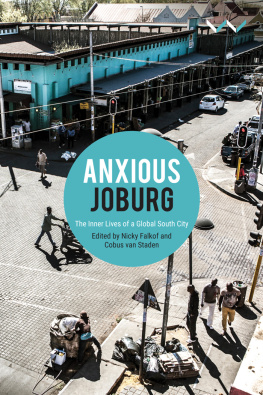
![Dzhon Makdonald - Nicky and the Tin Finge [story]](/uploads/posts/book/918175/thumbs/dzhon-makdonald-nicky-and-the-tin-finge-story.jpg)

